This is one in a series of posts on the Fujifilm GFX 100S. You should be able to find all the posts about that camera in the Category List on the right sidebar, below the Articles widget. There’s a drop-down menu there that you can use to get to all the posts in this series; just look for “GFX 100S”. Since it’s more about the lenses than the camera, I’m also tagging it with the other Fuji GFX tags.
In the previous three posts, I tested the off axis performance of the Fujifilm 110 mm f/2, 80 mm f/1.7 , and 120 mm f/4 macro GF lenses on a GFX 100S. Now I’ll do the same with the 250 mm f/4 lens.
Here’s the test protocol:
- RRS carbon fiber legs
- C1 head
- Target distance 22 meters for a 250 mm lens
- ISO 100
- Electronic shutter
- 10-second self timer
- f/4 through f/11 in whole-stop steps
- Exposure time set by camera in A mode
- Focus bracketing, step size 1, 80 exposures
- Initial focus well short of target
- Convert RAF to DNG using Adobe DNG Converter
- Extract raw mosaics with dcraw (I’ll change this to libraw and drop the DNG conversion when I get the chance, but the Matlab program that controls all this is written for dcraw)
- Extract slanted edge for each raw plane in a Matlab program the Jack Hogan originally wrote, and that I’ve been modifying for years.
- Analyze the slanted edges and produce MTF curves using MTF Mapper (great program; thanks, Frans)
- Fit curves to the MTF Mapper MTF50 values in Matlab
- Correct for systematic GFX focus bracketing inconsistencies
- Analyze and graph in Matlab
I analyzed a horizontal edge in the center of the frame, and both a horizontal and a vertical edge on the far right side of the frame. The horizontal edge is oriented in a radial direction, and that’s how I’m identifying it in the plots. The horizontal edge is oriented in a tangential direction, and that’s the way I’m tagging it.
Here are the MTF50 results, in cycles per picture height, with the 110/2 thrown in for comparison:
I measured the MTF50 on each of the raw channels, and am reporting on the MTF50 on a white-balanced composite of those channels, which is mostly the green channel. The 250 doesn’t do as well as the 110 in the center, but it does a bit better at the edge of the frame.
Another way to look at sharpness is microcontrast, which is defined as the contrast at a particular frequency not far from Nyquist. I prefer 0.25 cycles per pixel.
That looks similar to the MTF plot.
Tightening the standard to 0.33 cycles per pixel:
Next is longitudinal chromatic aberration (LoCA) by the numbers.
This plots the shift of the red raw image plane (on the sensor side of the lens) compared to the white-balanced raw plane. The 100 has very low LoCA. The 250 has quite a bit more.
The above is the blue raw plane differences with respect to the white-balanced raw plane.
There’s another way of looking at LoCA and defocusing behavior, and that’s what I’m calling the transfocal bokeh images.

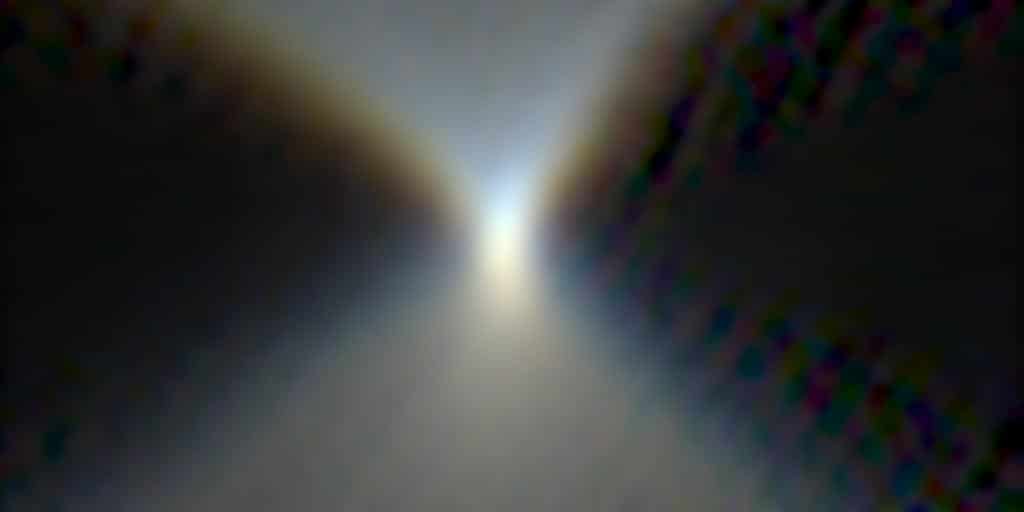
The vertical direction is the shift of the focal plane with respect to the plane of the sensor. Focus distance runs from top to bottom, with front-focused at the top and back-focused at the bottom. The horizontal axis a heavily-magnified view of distance in the sensor plane. The colors are highly approximate; I just assigned the raw channels to their respective sRGB channels.
These show a similarity that we haven’t seen so far in this off-axis testing with the lens wide open. The LoCA is apparent.

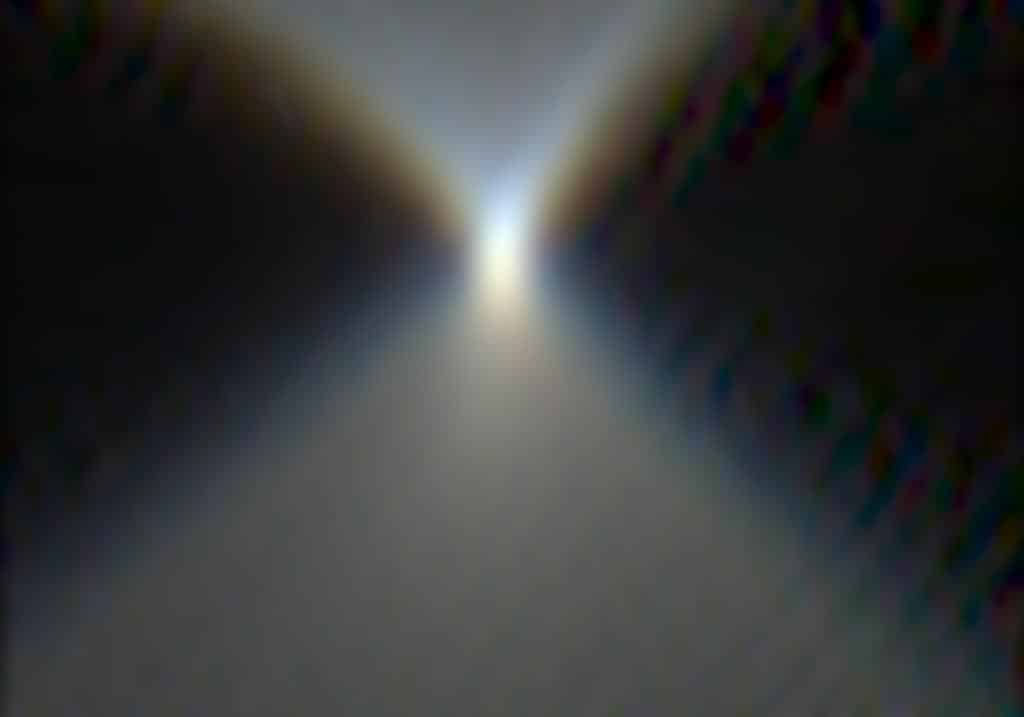
If there were significant astigmatism, we’d see the focal plane shifting between the tangential and radial images; we don’t see that.
Nice job, Fuji.
Testing note: It takes a lot of care to get this level of performance out of the 250/4. I even had to turn off the sound effects for the electronic shutter.
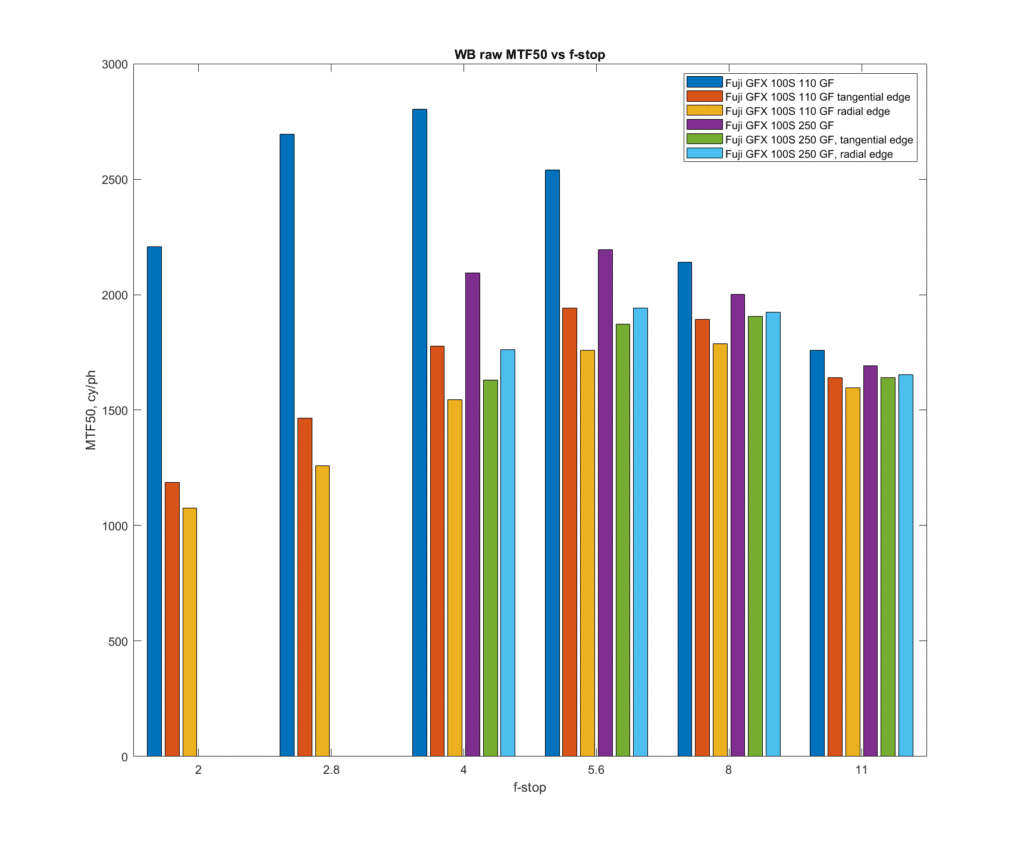
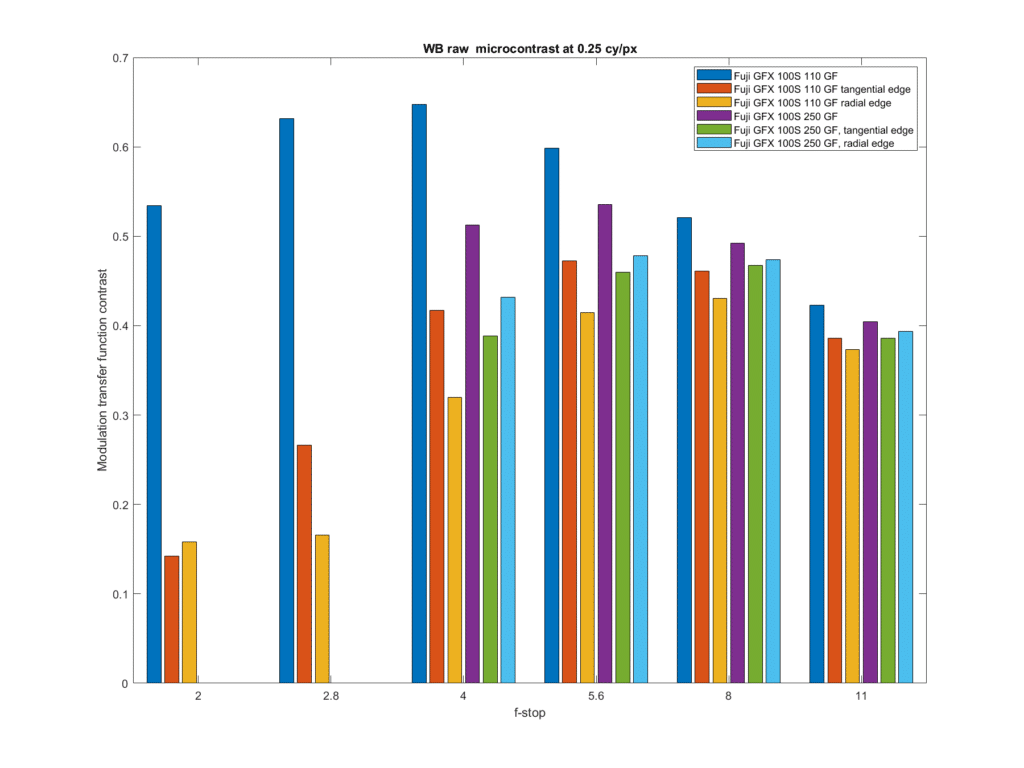
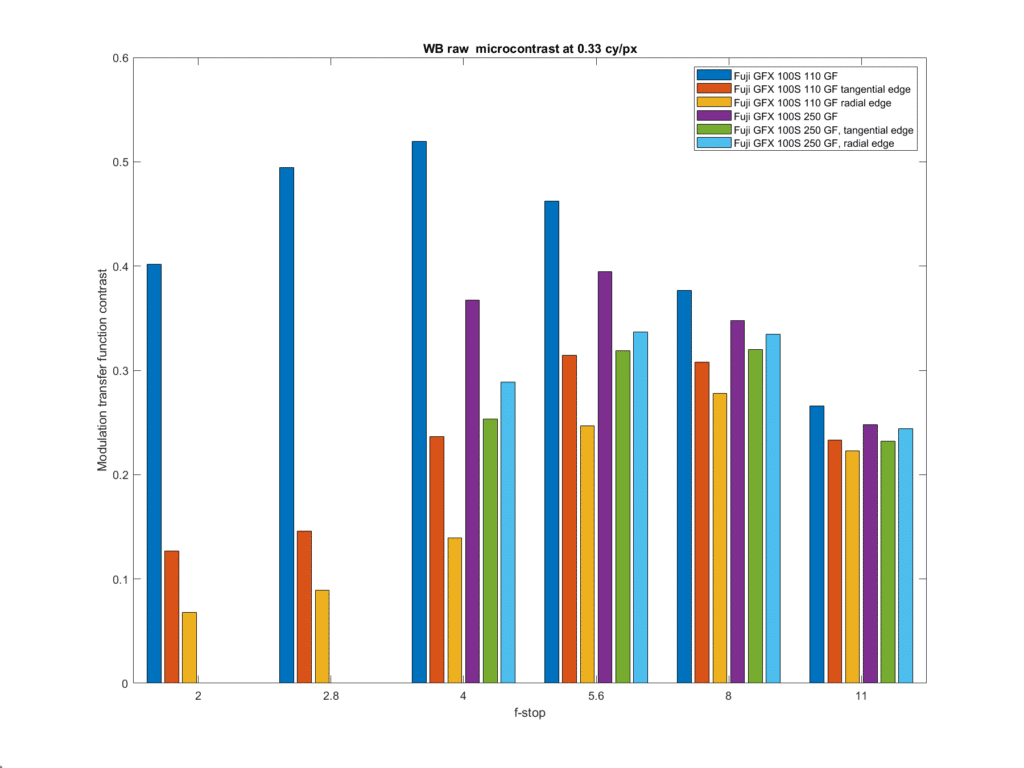
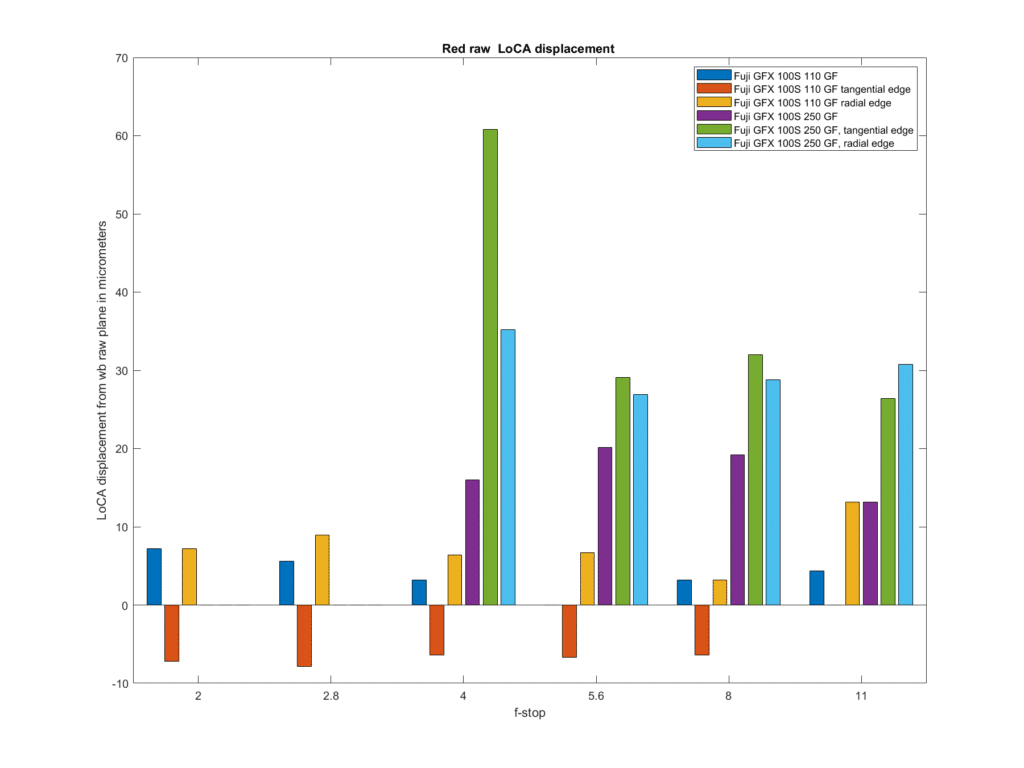
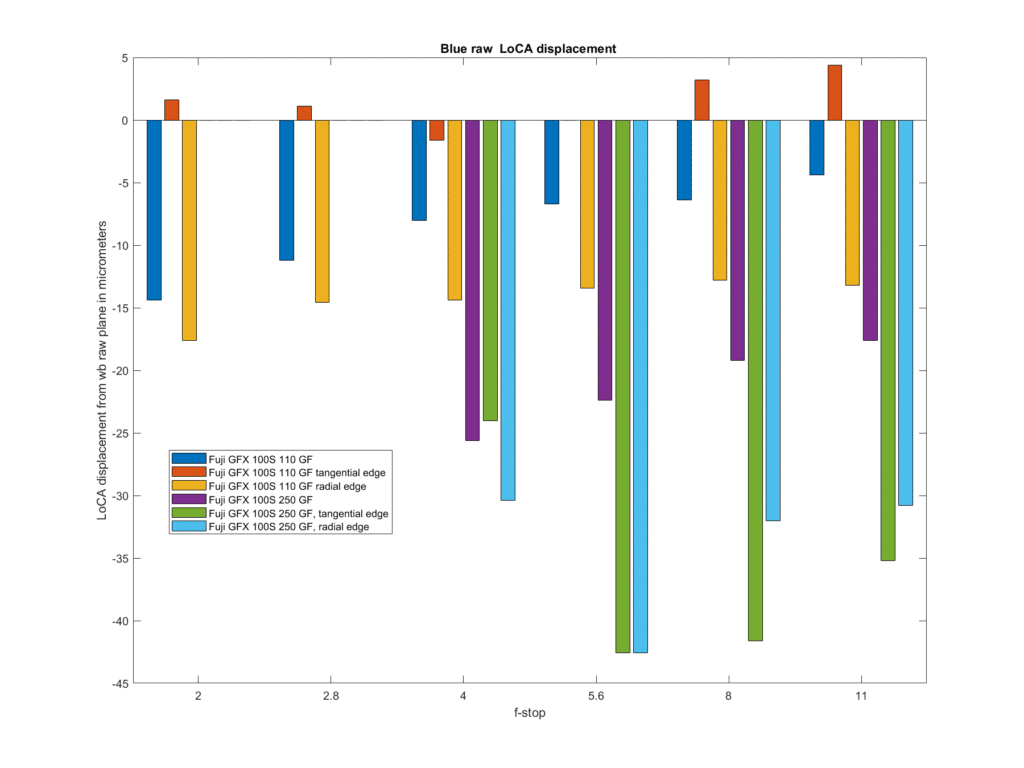
Leave a Reply